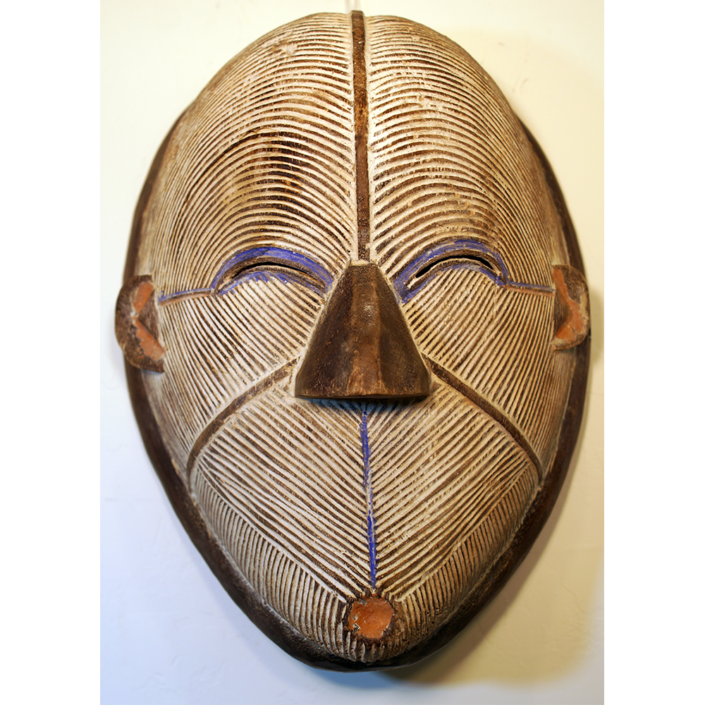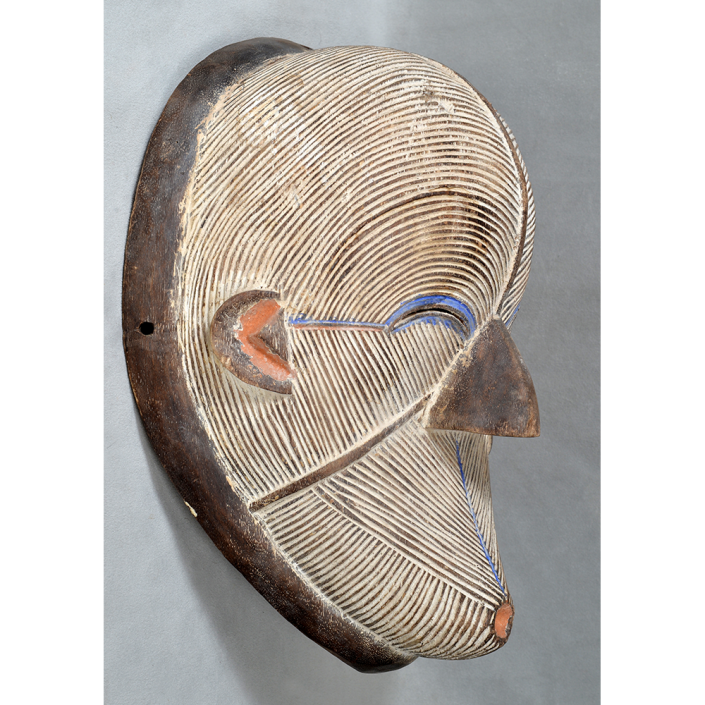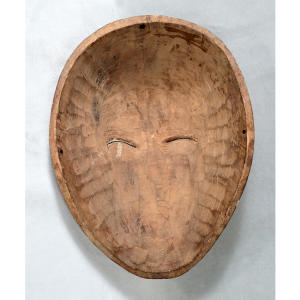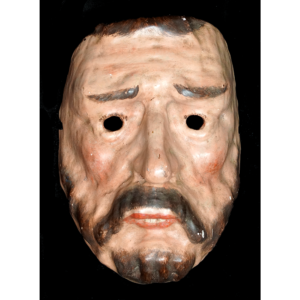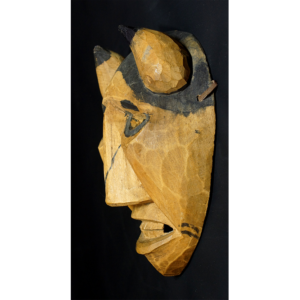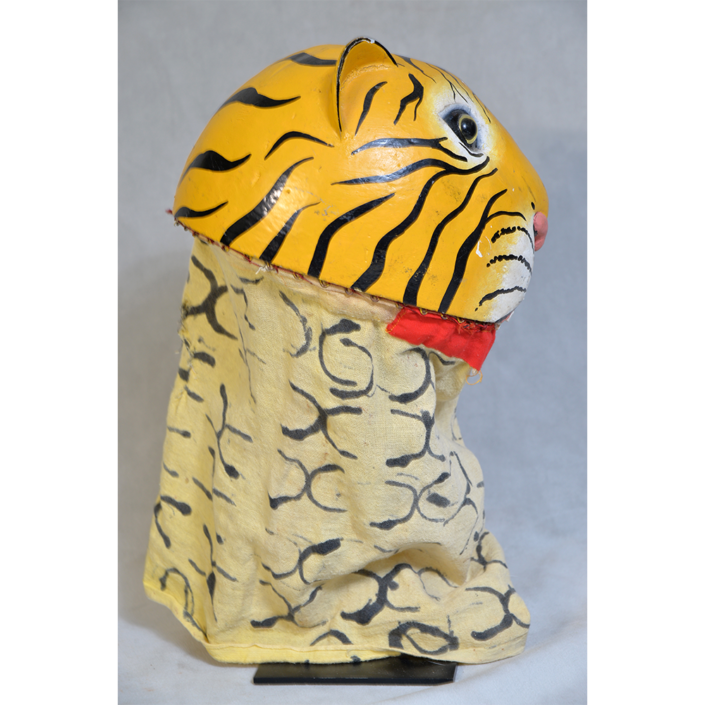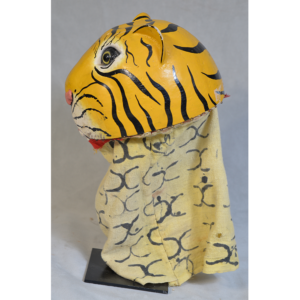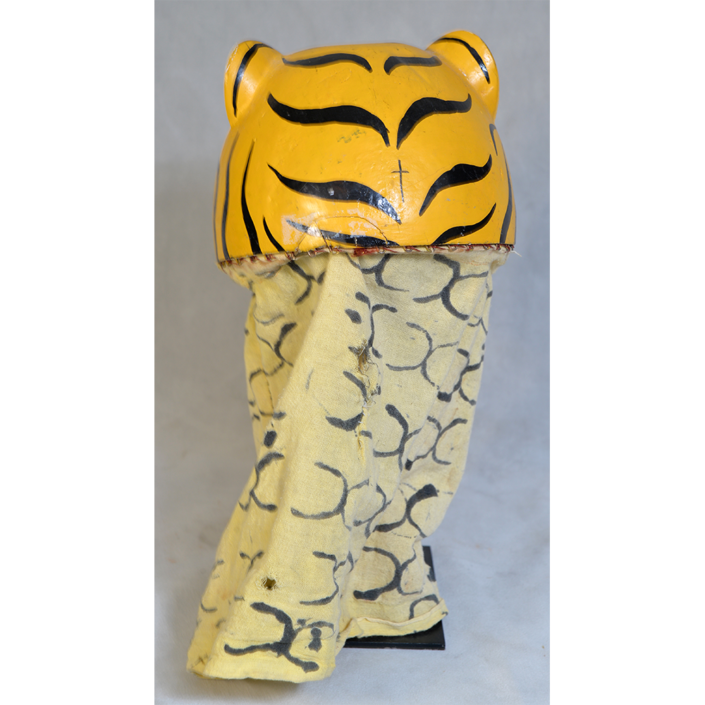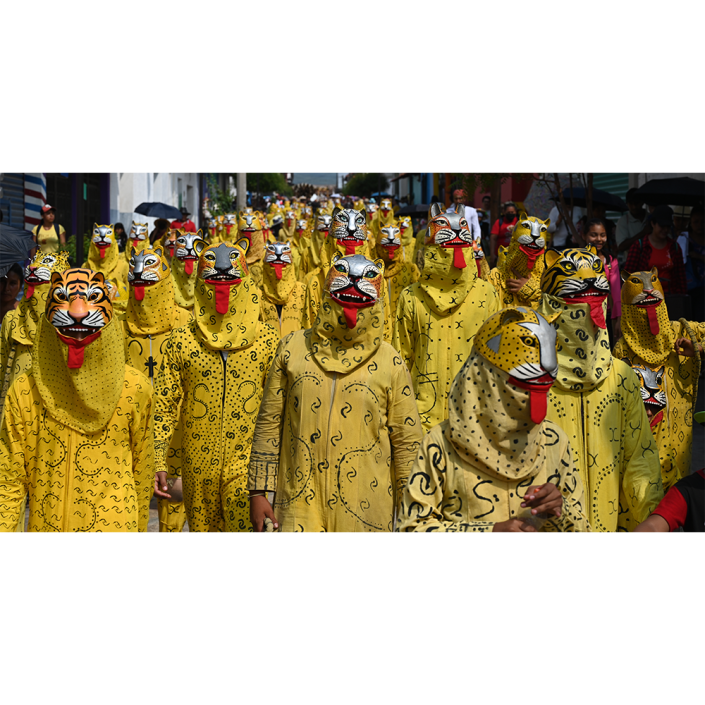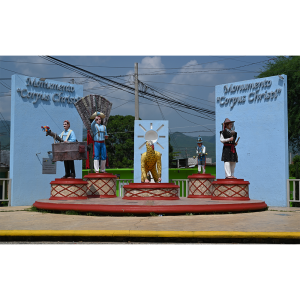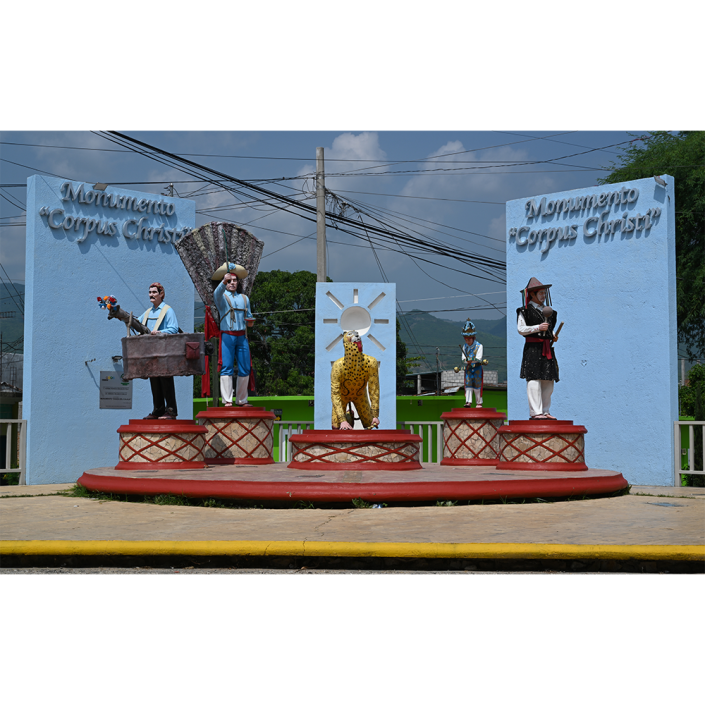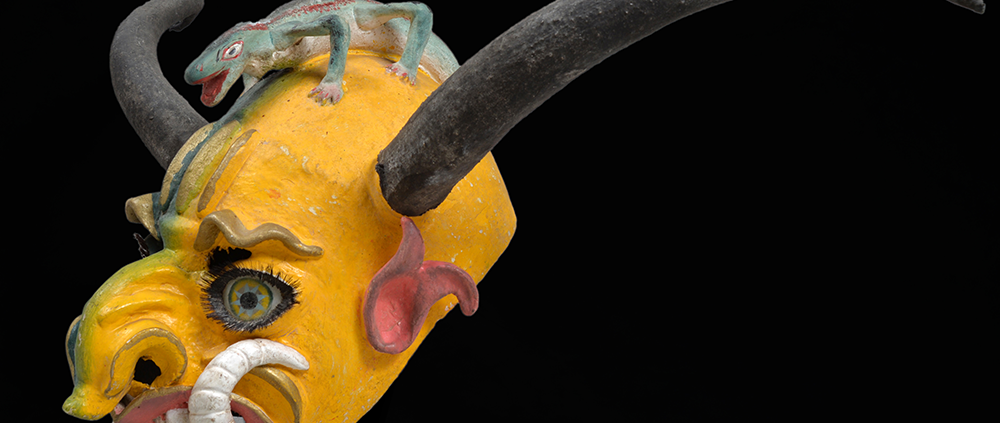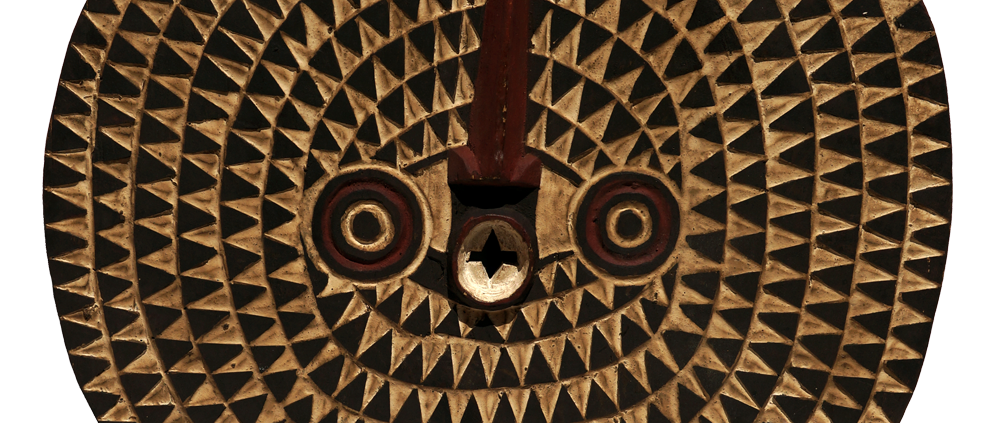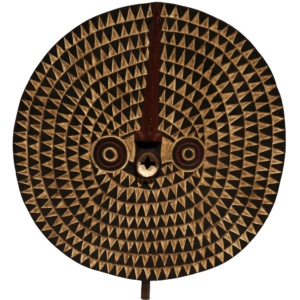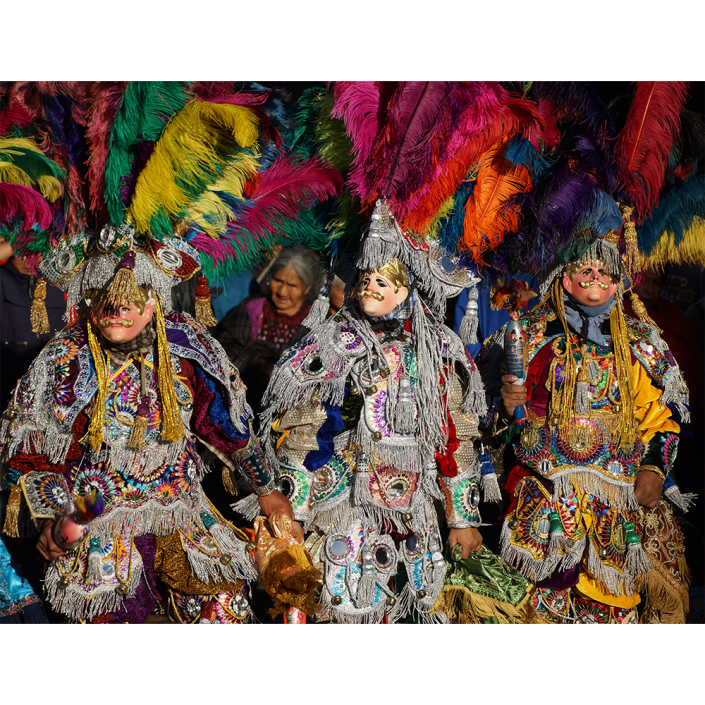TITLE: Songye Face Mask
TYPE: face mask
GENERAL REGION: Africa
COUNTRY: Democratic Republic of Congo
ETHNICITY: Songye
DESCRIPTION: Bambudye Mask
CATALOG ID: AFCD017
MAKER: Unknown
CEREMONY: Healing; Purification; Secret Society; Social Control; War Preparation
AGE: 1990s
MAIN MATERIAL: wood
OTHER MATERIALS: kaolin
The Songye people of the Democratic Republic of Congo (formerly Zaire) are closely related to the Luba people of the same region. Both use a variety of face masks for social control and village purification. The Songye were formerly a warlike people and used their masks to frighten enemies, as well as to frighten away evil spirits from the village or from a sick individual plagued by them. The masks are danced by secret societies to protect the village and are usually worn with a full body costume of raffia. Songye masks are typically characterized by striations carved into the face, representing the facial scarification used by Songye warriors.

